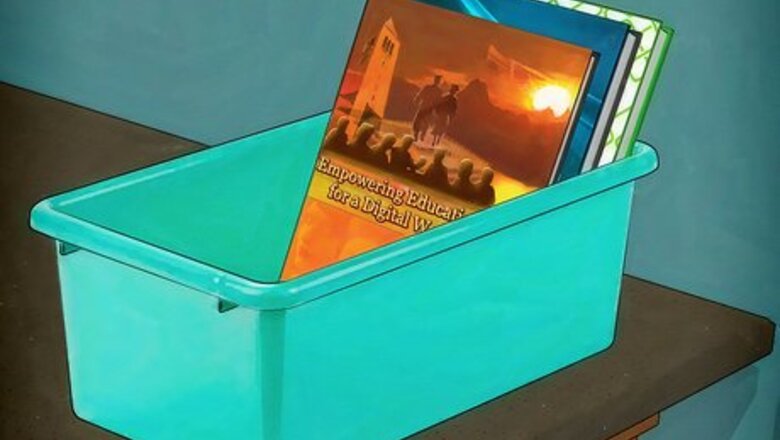
views
Protecting Books
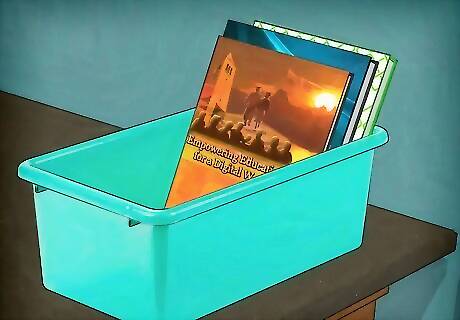
Store books long-term in plastic bins. If you've got more books than you know what to do with, the best place to store them is in opaque plastic tubs that you can seal and store in a cool location. Plastic tubs help to protect books from sunlight, rodents, and other conditions, and are easy to stack in out-of-the-way locations. If you don't need to access your books regularly, plastic tubs are a good choice. Most retailers sell a variety of storage bins, in various sizes. Try to get relatively small boxes, no bigger than 12 x 12 in., or the bins will become quite heavy. It's fine to store these books anywhere the temperature will be consistent and cool. Attics and garages will be fine in certain climates. Polyurethane plastic tubs should protect books adequately from insects and rodents who might chew up books.
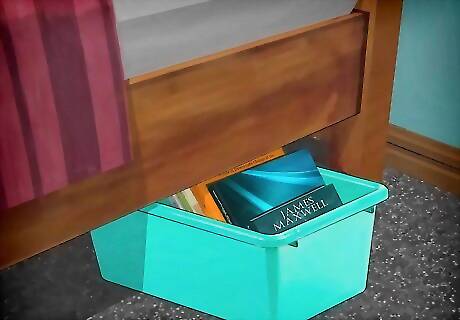
Find an appropriate space for storing your bins of books. Got more books than you've got shelves? Finding a spot for all those old paperbacks can be tough. But with the right storage techniques, you can find places for them. Store book bins underneath the bed, at the backs of closets, or in the basement. Try to store books indoors, if you can. Exposed attic spaces, sheds, and garages can have drastic temperature swings, which can be rough on the binding and paper. Consider renting a storage space in your town for storing books. If you have a lot of books, an indoor storage facility might be temperature-controlled and appropriate for some old boxes of books, while outdoor garages might be fine for your old paperbacks.
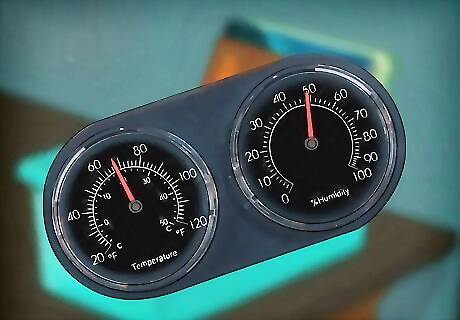
Keep books in rooms with relatively low humidity. In very hot climates, books can start to warp. Ideally, you should keep the relative humidity around 35%. Humidity causes binding to warp, paper to curl, pages to mould and books to suffer. Ideally, you want to keep your books stored long-term in a climate-controlled room, kept around 35% humidity. Good dry air circulation is good for books. Anything lower than 50-60% should be okay for most books, but rare or valuable books should always be stored around 35%, indoors. If you're really particular about keeping your books safe, though, Try to keep it even lower if possible.
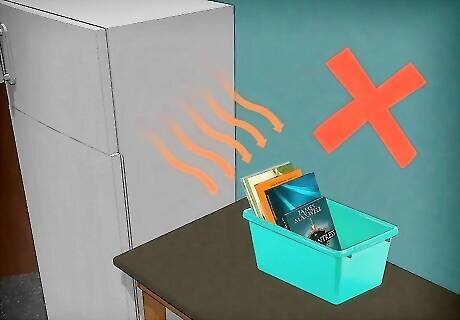
Keep books away from direct heat. Books stored close to heat ducts, hot appliances, and other sources of direct heat can become warped. To protect the binding of your books, keep them stored in relatively cool temperatures. In most climates, a room temperature of 60-75 degrees is perfectly fine. If you are concerned about the distribution of heat in a particular room and the safety of your books, rotate them regularly to make sure a handful of books aren't getting more exposed than others.
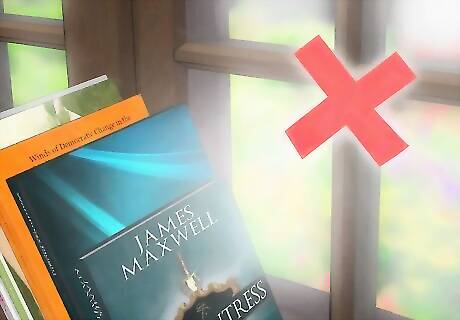
Reduce exposure to direct light. Soft room lighting won't affect the quality of books much. But hard, direct sunlight will always serve to bleach out and damage the binding and the page-quality of books. Rooms in which books are kept should be shady, with drapes over the windows to protect the books.
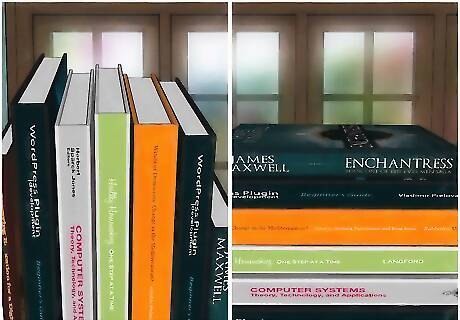
Store books upright or flat. The best way to store books? Flat on their back, or standing up on their "tail", the bottom edge of the book. This means the books is stored standing upright, so you can read the spine correctly. Books are designed to be stored in this way, and can be supported by other books, helping to keep them stable and safe. Never store books with the binding or spine pointing up. This will always crack the hinge, which will affect the life of the book.

Protect books from bookworms. Certain types of book binding glue and paper are often an attractive snack for cockroaches, silverfish, various beetles and other insects. In most conditions, you won't have to worry much about protecting your books from infestation, but it's still a good idea to keep food and crumbs out of the book room to keep insects from coming in.

Store rare books in custom sleeves. Very rare books, or books that you're concerned about keeping safe from infestation should be stored in plastic sleeves. Custom enclosures are also available at most rare book stores, made to fit the specific volumes you've got. If you find that some of your books have been infested with insects, the best way to clean them out is to place them in plastic bags and put them in the freezer for several hours to kill the bugs, then clean them thoroughly. Read the next section for more information about cleaning books properly.

Consider finding a conservator for very rare items. If you have some first editions or especially rare books that you're concerned bout taking care of yourself, consider enlisting a professional to care for your books for you. Museums, libraries, and private rare book collectors may be a better place for those items than the garage. The American Institute for Conservation (AIC) collects rare artistic and historical works, and offers a variety of conservators you can enlist to guide you through the process of caring for them.
Cleaning Books
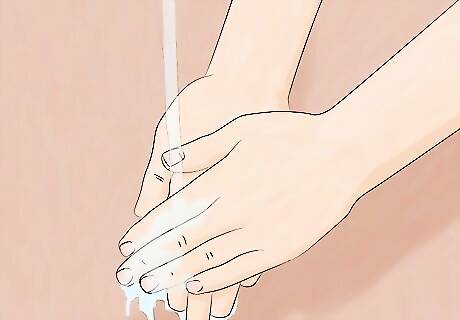
Wash and dry your hands before handling books. The number one enemy of books? Dirt and natural oils from your hands as you handle them. When you're handling your books, make sure to wash your hands with warm, soapy water, and thoroughly dry them before picking up and thumbing through your books, or cleaning them. Very old, leather-bound, or rare books should be handled while wearing latex gloves. Never eat or drink around old books that you want to protect.
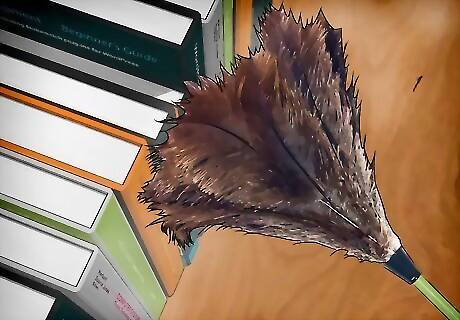
Dust rooms with books regularly. Books need to be cleaned regularly to keep dust from accumulating on them. Generally, unless books become very soiled, basic dusting and proper temperature and environment control should be enough to keep them clean long-term. Start dusting by removing all the books from your shelves and cleaning the shelves thoroughly, dusting them and wiping them down before reshelving the books.
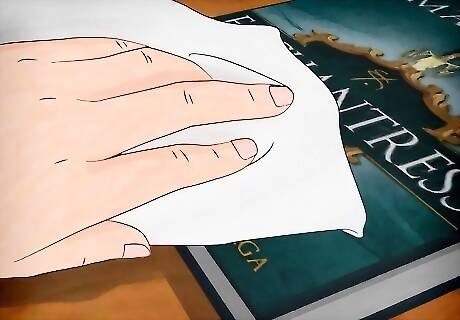
Wipe books down with a clean magnetic or lint-free cloth. The best way to clean old books is with a microfiber cloth that traps dust inside. Instead of just blowing the dust around, as with a feather duster, these types of cloths will trap the dust and remove it completely. They've commonly sold at most home retail stores. Don't use water or other solvents to Try to clean books. If you have a very rare book that's gotten dirty, take it to a book dealer in your area and talk about restoration methods. Most books should not need to be cleaned in any way other than gentle dusting.
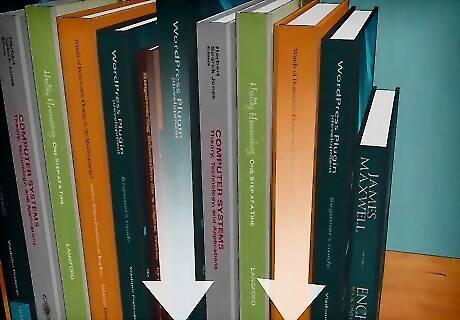
Start cleaning from the "head" to the "tail" of the book. If you're storing books upright on the shelf, most books will only be dusty or dirty at the top of the cover, and on the top binding of the book. The bottoms will usually be mostly clean. When you're cleaning then, start at the top, wiping down gently with the cling-cloth and wiping dust from the book.
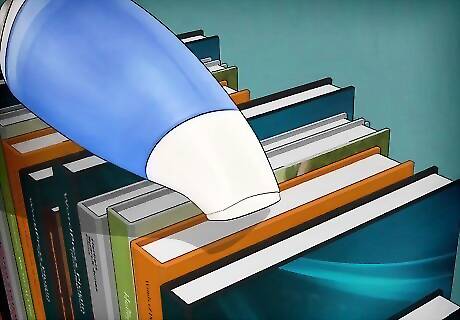
Use a small hand-vac in the hinges. If your books are very dusty, it may be good to use a small hand-vac, or the tube function on your regular vacuum cleaner to gently suck the dust out of the hinge in the binding. Run the vacuum over the top of the books while they're still stacked to get the most dust out of there, before you go back over them individually with a cloth. This can be a good way to get the worst out of the way first.
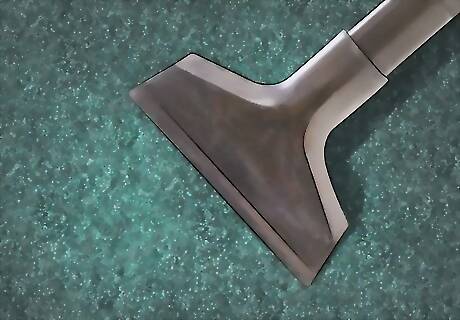
Vacuum the room regularly. Most of the dust in a book room will be tracked in from the floor, actually. While dusting the shelves themselves is important, paying attention to cleaning the room regularly will help to keep your books in their prime condition. Vacuum and sweep the floors at least once a week, if your books are in a high-traffic area, to keep your books from needing more substantial cleaning.
Displaying Books
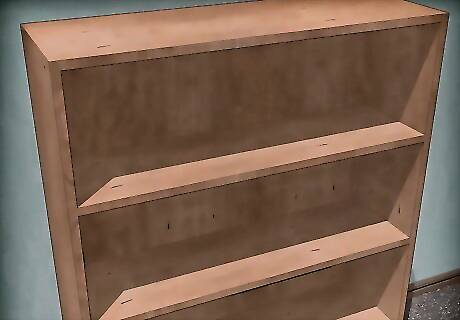
Pick an appropriate book shelf. The best, most organized, and most secure way to store books is on shelves designed for the purpose. Its clean, accessible, and allows you to easily peruse the books that you have quickly. They're available at most home retailers and are always a good choice. Natural, pre-treated wood and sheet metal are the best surfaces on which to store books. Storing books on shelves with synthetic paint or other chemicals can leech into the binding and paper, affecting the quality of the items.
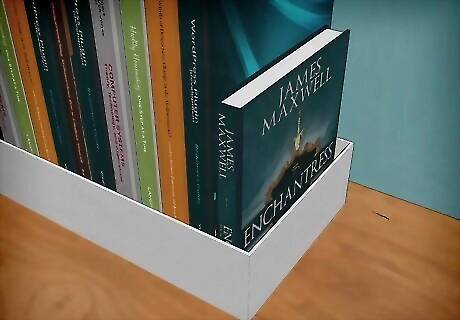
Display books in stacked crates. One more quirky and off-kilter way to store and access your books is to line them up in a series of stacked wooden crates. Old milk crates or other boxes of various sizes can be reclaimed, then stacked in various patterns to fit the space that you have. Stack book crates on the side, rather than bottom-up, so you can stack your books as if they were in a bookshelf. This makes them easy to access and peruse. Think of it as a DIY bookshelf. Crates allow you to organize your books into micro genres, keeping your cookbooks in one crate and your novels in another, putting them in adjacent spaces and rooms if necessary. They're also movable.
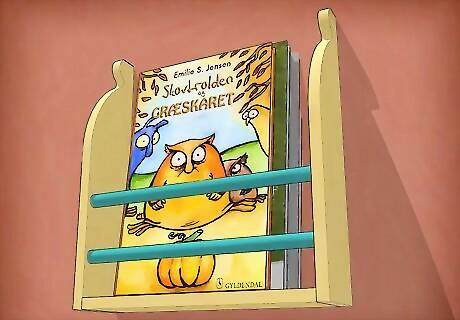
Store your children's books in wall-mounted theme bins. One creative idea with your stacks of children books is to purchase or fashion a wooden cut of an animal, dinosaur, or other kids-themed shape, and mount it on the wall. To it, affix small shelves or baskets in which you can store books at a child-appropriate height. This is a great way to lively up your kids' room and organize all their books.
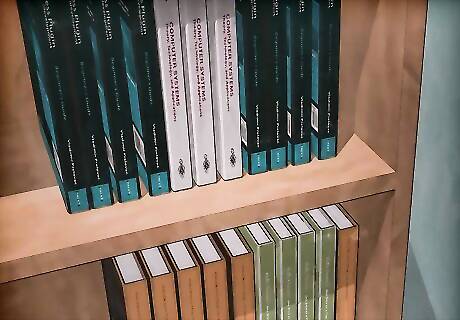
Shelve books according to genre. If you've got a lot of books, one of the most user-friendly ways to organize them is by genre. Keep your novels with your novels, your non-fiction with your non-fiction, and other genres together. Get as specific as you want, for the books that you have. Within genre, you can specialize even further if you want to. In the history section, store your military history books together, but differentiate them from your natural history books, European history, and other sub-genres. If you don't have a lot of different genres, just split them into two big categories: Fun books and learning books. Put all novels, stories, and sci-fi in the first section. Put all your old school stuff in the other.
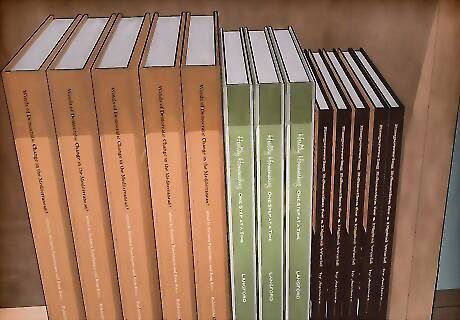
Arrange your books by size and shape. Want to make sure your books look nice on the shelf? Group them according to their relative size and shape, to keep your shelves, stacks, or crates looking organized. Keep very tall and thin books with other very tall and thin books, and keep very squat and short books with other like books. Aside from looking nice and organized, books can be supported better if they're stacked next to books of a similar size. This helps to stabilize the covers and the binding.
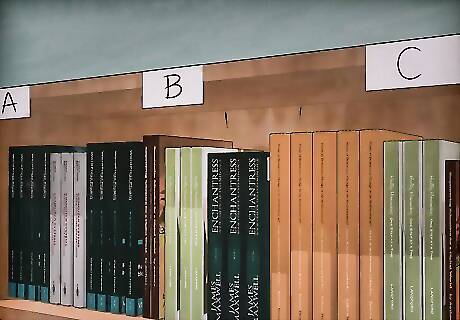
Arrange your books alphabetically. If you've got more of a linear mind, it might make more sense to you to categorize your books alphabetically, for easy reference. This may look a little more chaotic on the shelf, and you'll end up with some weird stuff next to one another, but you'll always know where everything is in the alphabet. Go by title, or go by the last name of the author when you're alphabetizing your books. Generally, titles are easier to remember, but you'll also end up with a lot of titles that start with "The" and "A," which might be confusing.
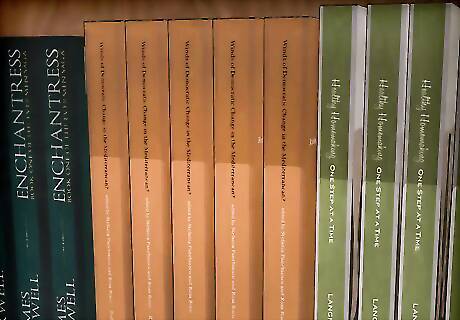
Arrange books by color. If you've got an eye for design, organizing your books according to the color of the binding can be an excellent way to give your room a pop of particular color, and make your book shelves really stand out. Group them according to specific colors and put them on the shelf in subtle gradations, moving from one color to the next. Consult the color wheel to learn more about how to pick the right colors for interior decorating, books included.




















Comments
0 comment